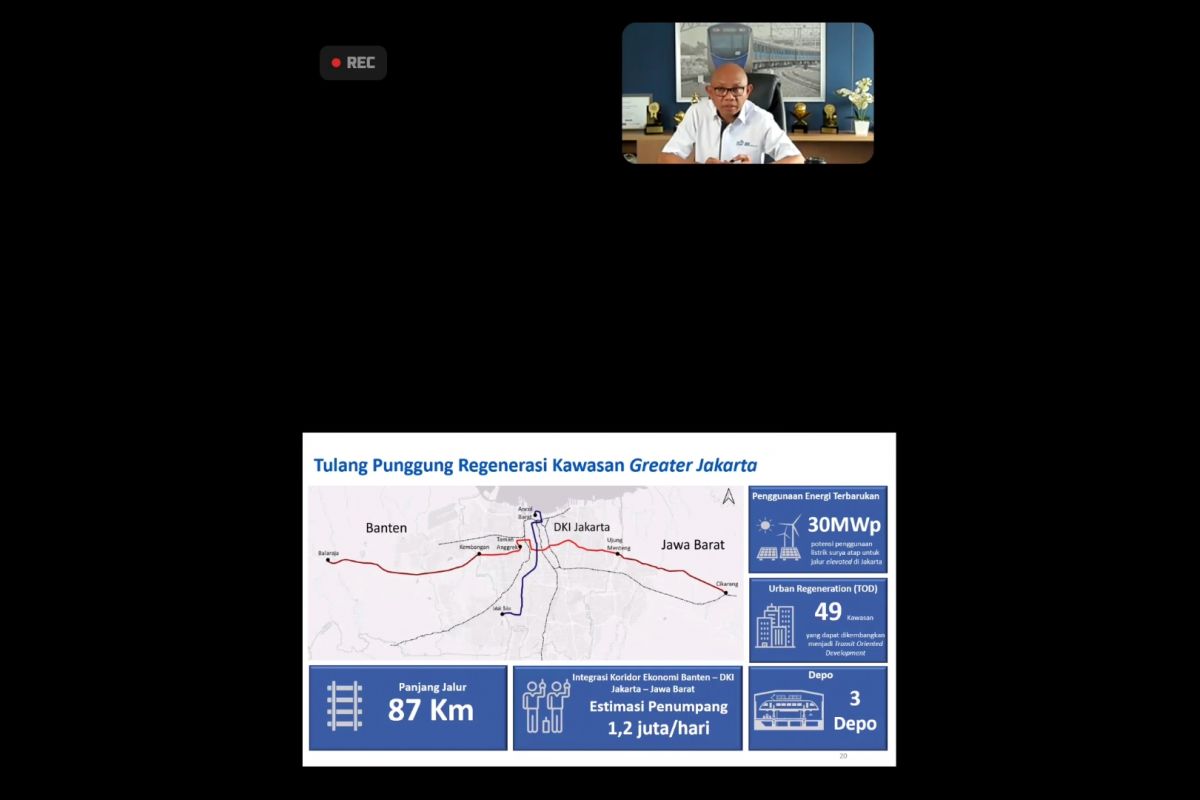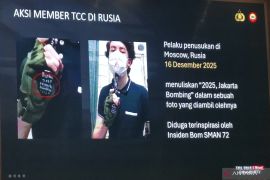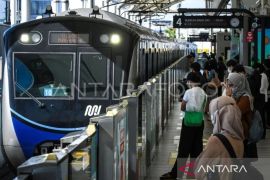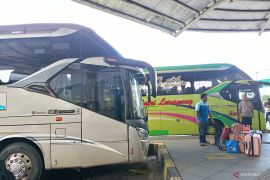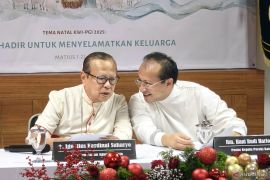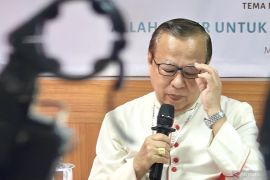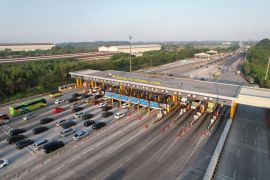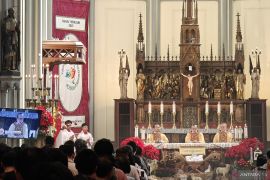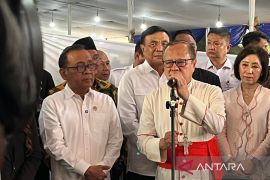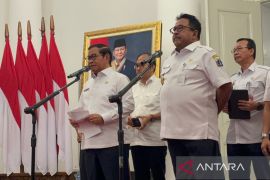One of the several efforts being undertaken is to create a 2023-2026 Regional Development Plan (RDP) to meet the needs of development geared towards the ability to compete with other similar global business cities.
Indubitably, it aims to encourage competitive aspects in terms of the government, human resources, infrastructure, and resource management, so as to finance development and promote rapid growth of the economy.
Apparently, this projection inspired the concept of modern, comfortable, and integrated mass transportation development designed by PT Moda Raya Terpadu (MRT) Jakarta.
One of them is in the design concept for the construction of the MRT phase 3 that passes through Banten, DKI Jakarta, and West Java, with a length of 87 kilometers (km), from Balaraja to Cikarang.
Related news: Indonesian youngsters contributed to construct the Jakarta MRT Phase 2
President Director of PT MRT Jakarta, William Sabandar, remarked that the development concept of the East-West Jakarta MRT line would be different from the construction of the phases 1 and 2 of the North to South MRT line.
The North to South MRT line is project-oriented, while a corridor-oriented approach is applied for the East to West line.
Development of the Jakarta MRT line from east to west will facilitate approximately 1.2 million daily passengers through a more humane approach. Three depots will be built, replete with cool and comfortable pedestrian paths, and easy access for use.
Concurrently, construction of the MRT is also expected to improve the design quality of city canals as aesthetic features and appearances of roads in the area and to be integrated with green open spaces.
Sabandar opined that the development of phase 1 in the past served as proof that MRT had a dual effect in terms of its contribution to an area, not only in terms of economic development of an area but also provided other tangible benefits to the government and general population.
He pointed out that for the Balaraja to Cikarang route, the Jakarta MRT line will pass through 49 areas that have the potential to become urban regeneration areas using the Transit Oriented Development (TOD) method.
Related news: President Jokowi launches TBM operation for MRT Jakarta's Phase 2A
The target in the 2030 sustainable development vision was also created with the concept of zero emissions through the use of new and renewable energy in the construction of the Jakarta MRT line.
As this has become the basis for development, Sabandar stated that the MRT line that connects these three provinces aims to use as much as 30 Mega Watt peak (MWp) of solar-powered electricity for the floating lines.
With the planned transportation integration in Jakarta in 2022, people will be able to access the Jakarta MRT station directly from their residential areas and choose mass transportation options deemed the fastest or most efficient in terms of the fares based on the Jaklingko system.
Funding challenges
Phase 3 of the MRT construction will be divided into three parts.
The first section connects Ujung Menteng-Kalideres, spanning 33.8 km; the second section connects Cikarang-Ujung Menteng spanning 21.9 km, and the third section connects Balaraja-Kalideres spanning 28.4 km.
The first part of this project is divided into two stages.
The first stage from Ujung Menteng to Orchid Gardens is 23.1 km long, and the second stage is from Orchid Gardens to Kembangan spans 10.8 km.
The involved costs are huge and even with rough calculation while bearing the current economic assumption in mind, it was estimated to reach some Rp160 trillion.
Given the amount of funding, Sabandar affirmed that the funding pattern for construction of the East to West Jakarta MRT line will come from various sources.
This is different from the previous MRT construction that relied on funding from loans guaranteed by the government.
Currently, the private sector will also contribute 30 percent of the funding, while the remaining 70 percent will be provided by the government.
Sabandar revealed that Japan is committed to assisting in the efforts through JICA.
Japan has helped MRT Jakarta in the development of phases 1 and 2.
So far, several institutions have recently expressed interest, including the Asian Development Bank (ADB), the Asian Infrastructure Investment Bank (AIIB), and also the British government.
They expressed their interest during the UK Minister of International Trade meeting with the MRT Jakarta directors.
Sabandar noted that so far, his firm had been communicating with a company from London, Crossrail International Ltd, in 2019 to exchange experiences regarding building the MRT.
The company was working on the MRT project, spanning a length of 117 kilometers, in England.
Business innovation
PT MRT Jakarta is also conducting business innovations, so that it can collect private contributions from the "land value capture" and "naming rights."
In short, land value capture is the potential value of an area should the MRT line pass by it. This land value capture approach can promote a lifestyle business.
Meanwhile, naming rights are rights granted to companies that cooperate with MRT.
Sabandar stated that Fatmawati Station was renamed Fatmawati Indomaret. Other stations with naming rights in addition to the Fatmawati Indomaret Station are Lebak Bulus Grab Station, Blok M BCA, Istora Mandiri Station, and Setiabudi Astra Station.
Currently, several MRT stations -- Cipete Raya Station, located after Fatmawati Station; Haji Nawi Station; Blok A; ASEAN; Senayan; and Bendungan Hilir -- have yet to offer cooperation in terms of the naming rights.
Earlier this year, PT MRT Jakarta conducted an assessment with several companies related to the station naming rights cooperation, including several State-Owned Enterprises, unicorn startup companies, and banks, he stated.
Sabandar noted that during the pandemic, the MRT had garnered good profits with businesses apart from ticket sales.
Hence, despite a decline in revenue from MRT train tickets in February 2022 due to the COVID-19 pandemic, MRT still derived gains capped at Rp453 billion beyond the realm of tickets.
The sources are none other than advertising, the MRT business, station naming, and assets owned at the station, as well as the opening of co-working spaces.
The number of MRT passengers is expected to continue to increase, directly proportional to the relaxation of several restrictions in future, so that revenue from passengers will also contribute significantly to the company.
Related news: Jokowi wants feasibility study for MRT East-West Line to be expedited
Related news: Jakarta aims to lead in sustainable transportation: Governor
Translator: Abdu Faisal, Mecca Yumna
Editor: Sri Haryati
Copyright © ANTARA 2022
